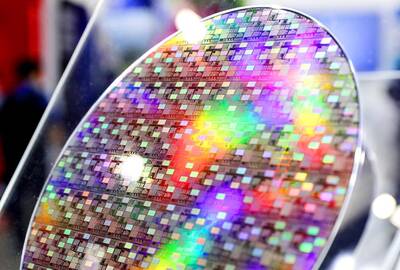Venezuela awarded on Wednesday the largest oil investment of Venezuelan President Hugo Chavez’s 11-year rule, drawing tens of billions of dollars of much-needed foreign finance to the Orinoco Belt just three years after the leftist leader nationalized operations there.
US-based Chevron and Spain’s Repsol led groups that looked beyond the risks of operating in Venezuela to tap into the OPEC member’s 100-plus billion barrels of reserves, a sign that oil giants need to replenish crude reserves that are increasingly under control of producer nations.
The results show victories for both sides. Oil companies agreed to tough conditions laid down by Caracas, while Venezuela softened fiscal terms in another sign resource nationalism around the world has been weakened by falling oil prices.
“This international investment is absolutely necessary for us, we could not develop the Orinoco Belt alone,” Chavez told oil company officials during a ceremony in the Miraflores presidential palace.
“This is mutually beneficial. You are here because you need to be here. These are relationships of equals, of friendship,” said the president, who has nationalized many of the South American nation’s industries in a drive to socialism.
Chavez, known for his jocular manner and combative anti-US politics, spent several minutes lambasting US President Barack Obama, even requesting that Chevron’s regional chief help Venezuela improve ties with Washington.
“Maybe Obama will come to the Orinoco Belt, bring him,” Chavez said.
Venezuela’s oil production has fallen below 2.5 million barrels per day (bpd) from more than 3 million bpd in 2001, the US Department of Energy says, principally because of limited oil-field investment and lack of qualified personnel.
Petroleos de Venezuela’s (PDVSA) own official statistics show output above 3 million bpd, though those numbers have been flat for five years. The company has twice in the last five years pared down aggressive production increases.
Repsol will take 11 percent in its project, the same stake as consortium partners Petronas of Malaysia and ONCC of India. State oil firm PDVSA will take 60 percent, with two other Indian companies taking the remainder, a Repsol official said.
Chevron will lead a second project along with consortium partners that include Japan’s Mitsubishi and Inpex, plus Venezuela’s Suelopetrol.
The government did not receive offers for a third project and did not receive bids from several companies Chavez has openly courted, including China’s CNPC and Russian firms such as Lukoil and Gazprom.
This may be in part because Venezuela is running a parallel process of direct adjudication for blocks in the Junin area of the Orinoco belt.
Venezuela holds the world’s fifth-largest oil reserves at an estimated 100 billion barrels, according to the BP Statistical Review. The Venezuelan government says it holds at least 210 billion barrels that could yet be produced and last month the US Geological Survey released a study that reached a similar conclusion.

WAITING GAME: The US has so far only offered a ‘best rate tariff,’ which officials assume is about 15 percent, the same as Japan, a person familiar with the matter said Taiwan and the US have completed “technical consultations” regarding tariffs and a finalized rate is expected to be released soon, Executive Yuan spokeswoman Michelle Lee (李慧芝) told a news conference yesterday, as a 90-day pause on US President Donald Trump’s “reciprocal” tariffs is set to expire today. The two countries have reached a “certain degree of consensus” on issues such as tariffs, nontariff trade barriers, trade facilitation, supply chain resilience and economic security, Lee said. They also discussed opportunities for cooperation, investment and procurement, she said. A joint statement is still being negotiated and would be released once the US government has made

NEW GEAR: On top of the new Tien Kung IV air defense missiles, the military is expected to place orders for a new combat vehicle next year for delivery in 2028 Mass production of Tien Kung IV (Sky Bow IV) missiles is expected to start next year, with plans to order 122 pods, the Ministry of National Defense’s (MND) latest list of regulated military material showed. The document said that the armed forces would obtain 46 pods of the air defense missiles next year and 76 pods the year after that. The Tien Kung IV is designed to intercept cruise missiles and ballistic missiles to an altitude of 70km, compared with the 60km maximum altitude achieved by the Missile Segment Enhancement variant of PAC-3 systems. A defense source said yesterday that the number of

‘CRUDE’: The potential countermeasure is in response to South Africa renaming Taiwan’s representative offices and the insistence that it move out of Pretoria Taiwan is considering banning exports of semiconductors to South Africa after the latter unilaterally downgraded and changed the names of Taiwan’s two representative offices, the Ministry of Foreign Affairs (MOFA) said yesterday. On Monday last week, the South African Department of International Relations and Cooperation unilaterally released a statement saying that, as of April 1, the Taipei Liaison Offices in Pretoria and Cape Town had been renamed the “Taipei Commercial Office in Johannesburg” and the “Taipei Commercial Office in Cape Town.” Citing UN General Assembly Resolution 2758, it said that South Africa “recognizes the People’s Republic of China (PRC) as the sole

Taiwanese exports to the US are to be subject to a 20 percent tariff starting on Thursday next week, according to an executive order signed by US President Donald Trump yesterday. The 20 percent levy was the same as the tariffs imposed on Vietnam, Sri Lanka and Bangladesh by Trump. It was higher than the tariffs imposed on Japan, South Korea and the EU (15 percent), as well as those on the Philippines (19 percent). A Taiwan official with knowledge of the matter said it is a "phased" tariff rate, and negotiations would continue. "Once negotiations conclude, Taiwan will obtain a better